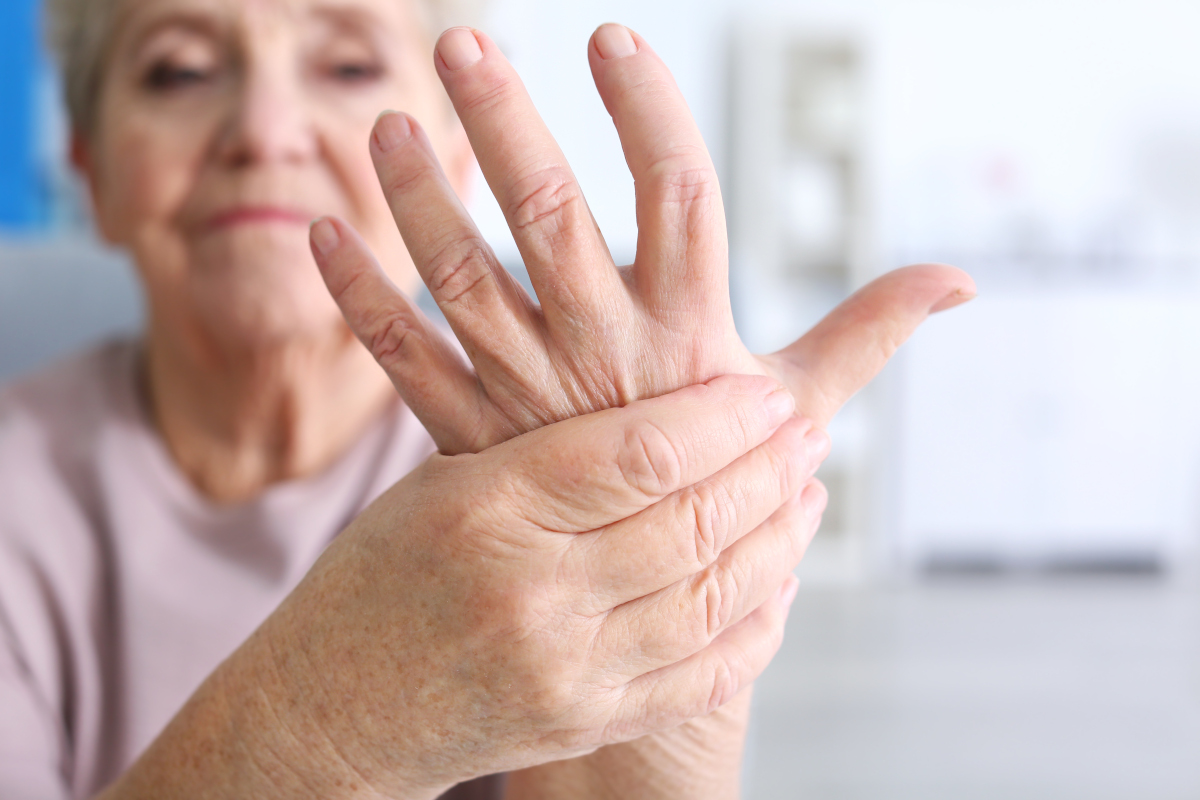If you ask anyone what health condition they associate with aging, arthritis will probably come up a lot.
It’s a general term that refers to over 100 conditions that cause joint inflammation. The most often discussed are osteoarthritis and rheumatoid arthritis.
Osteoarthritis usually occurs in the knees, hips, and hands. The cartilage breaks down and changes bone. It is degenerative and occurs slowly over time. It can lead to reduced function and mobility. Secondary osteoarthritis can be caused by an injury, deformity, infection, or disease. The cause of primary osteoarthritis isn’t known.
Rheumatoid arthritis (RA) is an autoimmune disease. It causes the immune system to attack your body, which leads to inflammation. RA usually attacks the joints, most commonly in the knees, hands, and wrists. The risk of RA increases with age, with women being diagnosed with it two to three times more often than men.
Seniors with arthritis should be mindful of their lifestyle and habits. The things you do and eat can have a direct impact on the disease. If left unchecked, you could lose mobility and independence. Healthy living will go a long way in slowing the progression of arthritis.
What can you do now to alleviate arthritis pain and live as fully as possible into your golden years?
Get Fit and Stay That Way with Senior-Friendly Workouts
It may sound counterintuitive but moving can help with arthritis. Staying active is great for maintaining ideal body weight and reducing stiffness. Just remember to stick to senior-friendly exercises that are safe for arthritis patients.
Avoid activities that are high-impact or repetitive, like running, jumping, tennis, and high-impact aerobics. Instead, do exercises that build strength with low-impact movements. Good options include:
- Cycling
- Swimming
- Dancing
- Water aerobics
- Walking
Ask Your Doctor for a Weight Recommendation and Maintain It
Ask your doctor for an ideal weight range based on your height, build, and health. You can find recommendations by searching online, but it is best to involve your doctor in this discussion. They will know more about your medical history and needs and can provide a more accurate recommendation.
Maintaining a healthy weight will help take pressure off joints and prevent further damage.
Enjoy a Nutritious Diet with Less Alcohol, Sweets, and Additives
Nutrition is a key part of managing arthritis symptoms. Alcohol, sweets, and foods with additives can cause increased inflammation. Plant-based dishes are usually a good choice.
A meal plan is a common part of senior living services. Moving into an assisted living community makes diet easier to manage. Talk to the facility you are interested in to learn more about how they meet resident dietary needs.
The best foods for seniors with arthritis include:
- Leafy greens
- Fatty fish
- Berries
- Olive oil
- Broccoli
- Nuts
- Garlic
The Mediterranean diet is preferred by many because it helps reduce inflammation.
Use Heat and Cold Therapy to Manage Joint Stiffness and Pain
Sometimes, a simple solution works. Applying heat or cold temperatures to joints with arthritis can provide relief. Cold therapy like an ice pack lowers inflammation and reduces pain and stiffness.
Applying heat can also reduce stiffness. Good ways to do this include a warm shower, electric blanket, or hot water bottle.
When applying heat, make sure it is comfortable and does not burn the skin. The same goes for cold therapy. Always wrap ice or cold objects with a towel before applying to your skin.
Find Out If Hyaluronic Acid Injections Could Make a Difference
Talk to your doctor to find out if you are a good candidate for hyaluronic acid injections. This procedure is prescribed for patients with osteoarthritis in the knees. One injection provides pain relief for between 4 and 6 months.
For some patients, this treatment option can help them delay or avoid knee replacement surgery.
Be Mindful of Ergonomics and Take Frequent Breaks When Sitting
Whether you have arthritis or not, ergonomics is important. Ergonomics refers to methods used to lower the risk of fatigue, strain, and injury in the workplace. If you are retired, you may still spend a lot of time at a workspace like a desk or a table.
Always sit up straight with your body aligned. Also, remember to stand up and stretch every 15 minutes to give your joints and muscles a break. If you notice discomfort, headaches, or eye strain, it’s time for a rest.
Avoid Putting Pressure on Weaker Joints as Much as Possible
Weaker joints should be protected as much as possible. That means minimizing pressure whenever you can. One way to do this is to rely more on your stronger joints and muscles. If you need to push a door open, use your shoulder instead of the more delicate joints in your wrists.
If you need to lift or move a heavy object, ask for assistance. It’s better to request help than suffer an injury and worsen arthritis pain.
Move to a Place That Supports Seniors with Arthritis
Senior housing includes options for older adults at all mobility and independence levels. You can find out how an assisted living community helps seniors with arthritis.
A retirement home is built with the necessary safety equipment and offers more support than most people receive when aging in place. It’s a great solution for seniors with arthritis who want to remain independent but also need assistance with some daily tasks. Visit Woodhaven Retirement Community to learn more.
It is possible to manage arthritis symptoms and still live a full, happy life with few limitations. Get started now to get relief from joint pain and stiffness.

